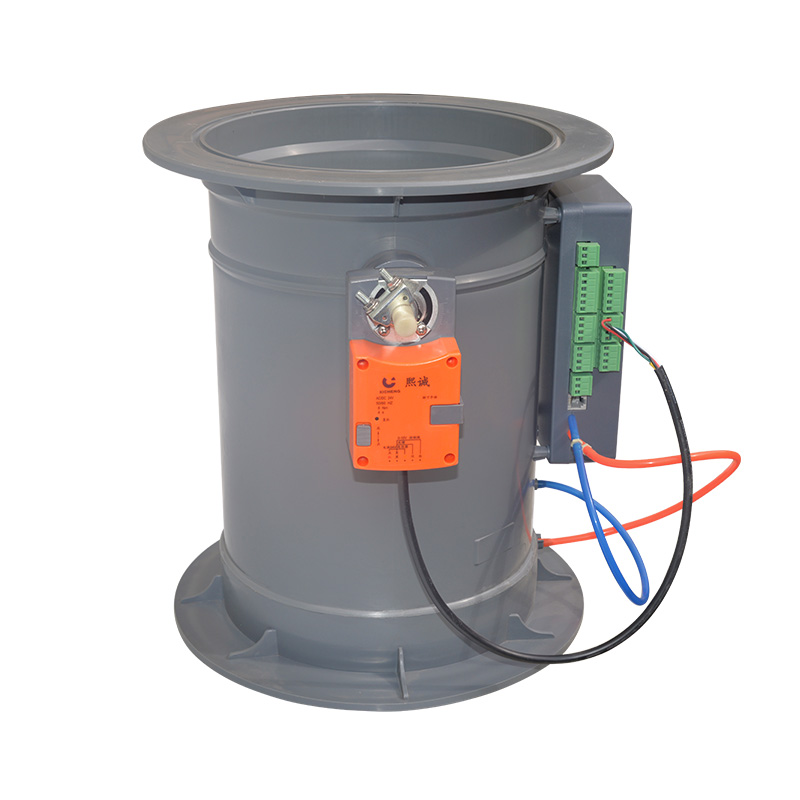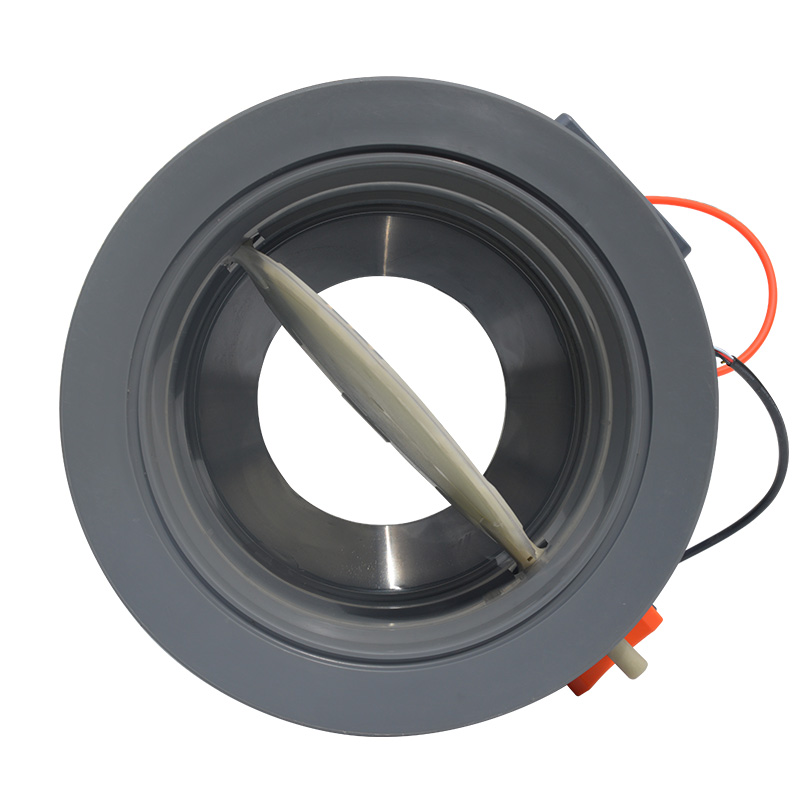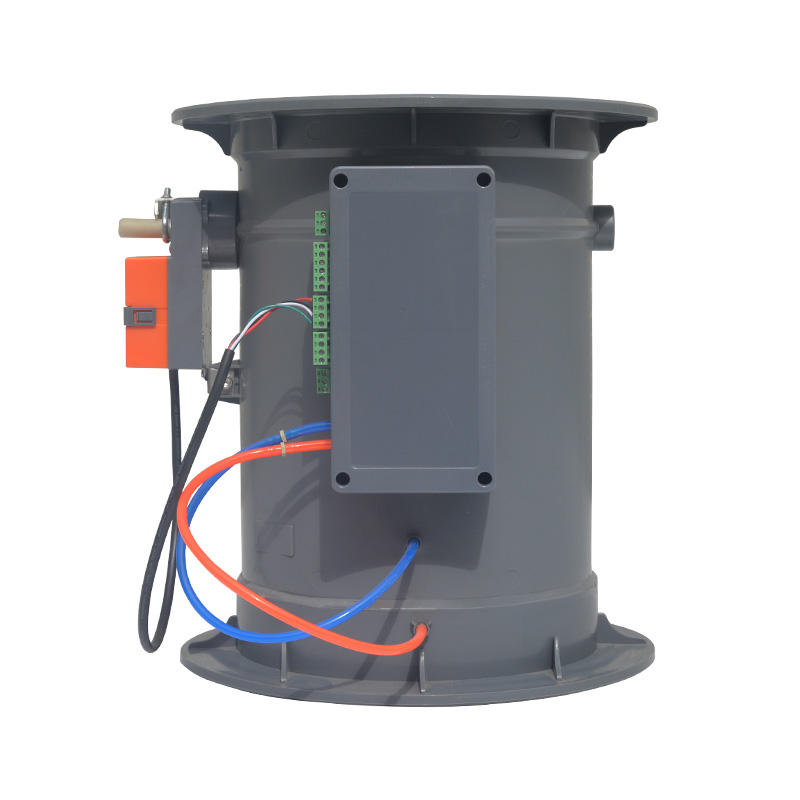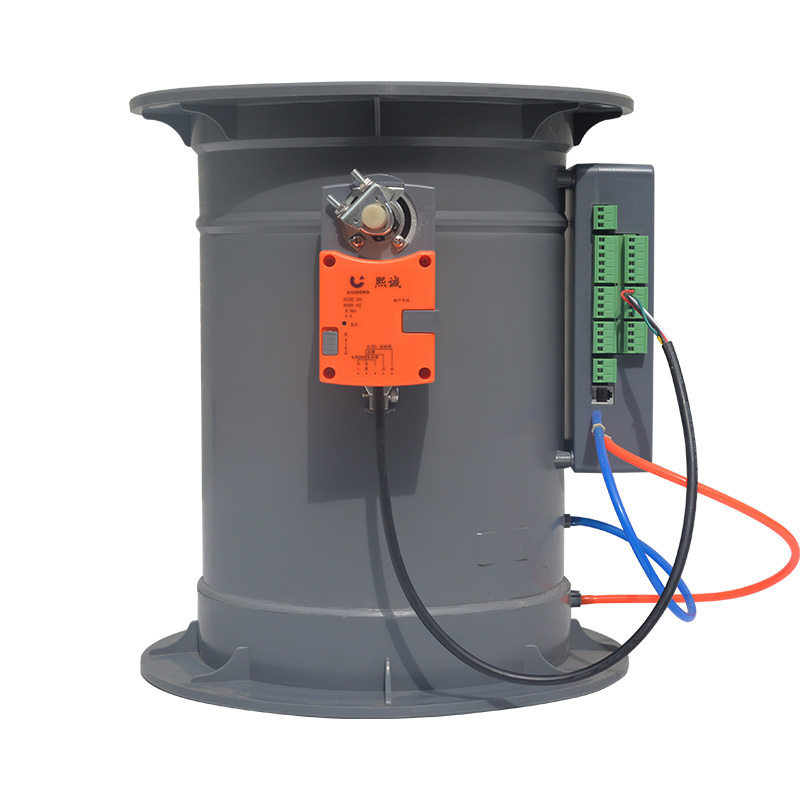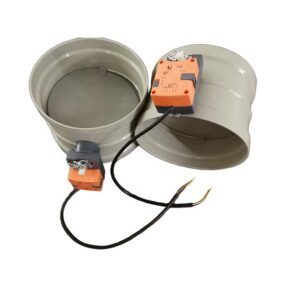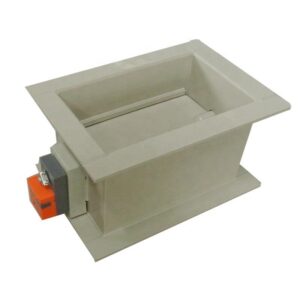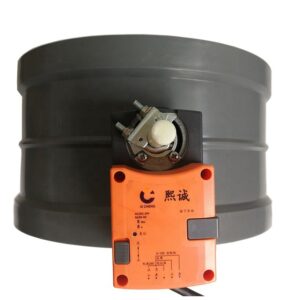Description
Airflow Control VAV (Variable Air Volume) dampers are an essential part of modern heating, ventilation and air conditioning (HVAC) systems. It is designed to regulate airflow in ductwork by adjusting the position of the damper blades. VAV dampers are used in a variety of applications including commercial buildings, healthcare facilities, educational institutions and industrial plants.
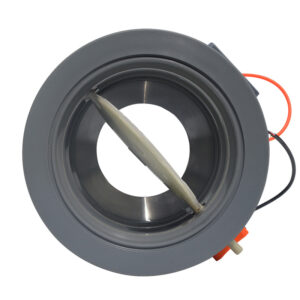
A VAV damper usually consists of a vane, an actuator and a controller. A vane is a movable element that regulates the airflow in an air duct. An actuator is an electric, pneumatic or hydraulic device used to control the position of the blades. The controller is a device that receives input from the building automation system (BAS) and sends signals to the actuators to adjust the position of the vanes.
The vanes of the VAV damper can be positioned anywhere from fully open to fully closed. When the blades are fully open, the greatest amount of air flows through the duct, and when the vanes are fully closed, no air flows through the duct. The position of the vanes is adjusted by actuators that receive signals from the controller based on inputs from the BAS.
One of the main advantages of VAV dampers is their ability to precisely control the airflow in the duct. This allows the HVAC system to maintain a consistent level of comfort in the space it serves, even as system loads vary. For example, when a large number of people enter a room, the temperature and humidity levels in the space may increase, and the need for cooling may increase. VAV dampers can help maintain a comfortable environment by responding to this increase in demand by opening the vanes to allow more air to flow through the ducts.
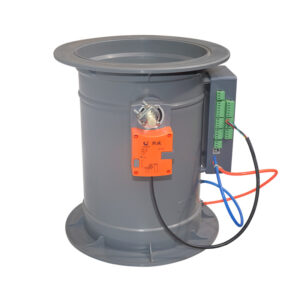
VAV dampers are also more energy efficient than traditional constant air volume (CAV) systems. In a CAV system, the airflow through the ducts is fixed regardless of system load. This can lead to wasted energy and higher utility bills, especially in spaces with varying occupancy rates. In contrast, a VAV system can adjust the flow of air in the ducts to match the load on the system, reducing energy consumption and lowering operating costs.
VAV dampers are available in a variety of sizes and configurations to meet the needs of different HVAC applications. Some VAV dampers are designed for installation in rectangular ducts, while others are designed for use in round ducts. VAV dampers can also be equipped with various accessories including transducers, filters and pressure transducers to enhance their performance.
In addition to the benefits of energy efficiency and comfort control, VAV dampers also help to reduce the noise level of the HVAC system. By regulating the airflow in the duct, the VAV damper reduces the velocity of the air passing through the duct, thereby reducing the noise level. This is especially important in applications where noise levels need to be kept to a minimum, such as medical facilities or recording studios.
Overall, airflow control VAV dampers are an essential part of modern HVAC systems. By regulating the flow of air in the duct, VAV dampers can improve energy efficiency, enhance comfort control and reduce noise levels, making them a valuable investment for any building owner or facility manager.
